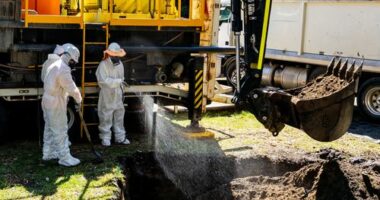Share this @internewscast.com
These rates differ depending on the state and energy provider.
Adam Corrigan, a specialist in energy efficiency and the founder of Your Energy Friend, advises that each home is unique, and there are numerous other energy-saving strategies to explore before spending large sums on solar panels and batteries.
Solar disappointment
Fifteen years ago, they were as high as 60 cents.

Feed-in tariff rates for solar panel owners can vary widely across different states and territories. Source: SBS News
Bolger estimates his original feed-in tariff of 12c per kWh would have saved him around $1,000 a year.
He says the experience has made him “indifferent” about the economic benefits of solar and he won’t be recommending it to others.

Lee Bolger says he’s now “indifferent” to the benefits of solar after his feed-in tariffs were reduced. Source: Supplied
Bolger doesn’t believe installing a battery will make a difference, because his solar panels won’t generate enough excess energy to store — especially in winter when it’s often raining and dark — to make the purchase worthwhile.
“My summer bills were ridiculously low. In winter, you will not generally get enough charge into the battery to make a big difference,” he says.
Battery discounts attractive for some but not others
Corrigan says batteries will work for some households and the new federal rebate does make the cost more affordable.
A battery can be very practical since it allows storage of the surplus electricity generated around midday, which can later be utilized in the early evening.
“In Australia, the average household uses about 15 to 20kWh of electricity per day,” a Finder spokesperson says.

Energy Minister Chris Bowen looks at home battery systems during a visit to SolarHub in May. Source: AAP / Lukas Coch
“If most of your energy consumption is in the evening and you’re paying a single electricity rate — let’s use 32.34c per kWh as an average based on single-rate plans in our database — then with a 10kWh battery and using 80 per cent of its capacity, you could save about $850 a year,” a Finder spokesperson says.
While the federal battery discount applies nationally, the states and territories also have programs that can be used to further reduce the cost.
Look at other options first
Making your house more energy-efficient should be the next priority before considering solar panels and, finally, batteries.
If you want to make your home more comfortable, get your insulation sorted and do your draft proofing. That’s your best return on investment. That’s your best bang for buck.
Corrigan says simple changes such as installing heavy-lined curtains and a box pelmet (which goes around the top of the curtain) can be very effective at keeping your home warm, and are much cheaper than double-glazed windows, for example.

Heavy curtains with a pelmet can be very effective in keeping your home warm. Source: Getty / Penpak Ngamsathain
Using a thermal camera around the home can also show gaps in roof insulation where batteries might have been moved.
“When you get into bed tonight and you pull the doona up, just cut some holes in it, see how well it works.”
Can you afford it?
Another consideration is what your next car will be.










